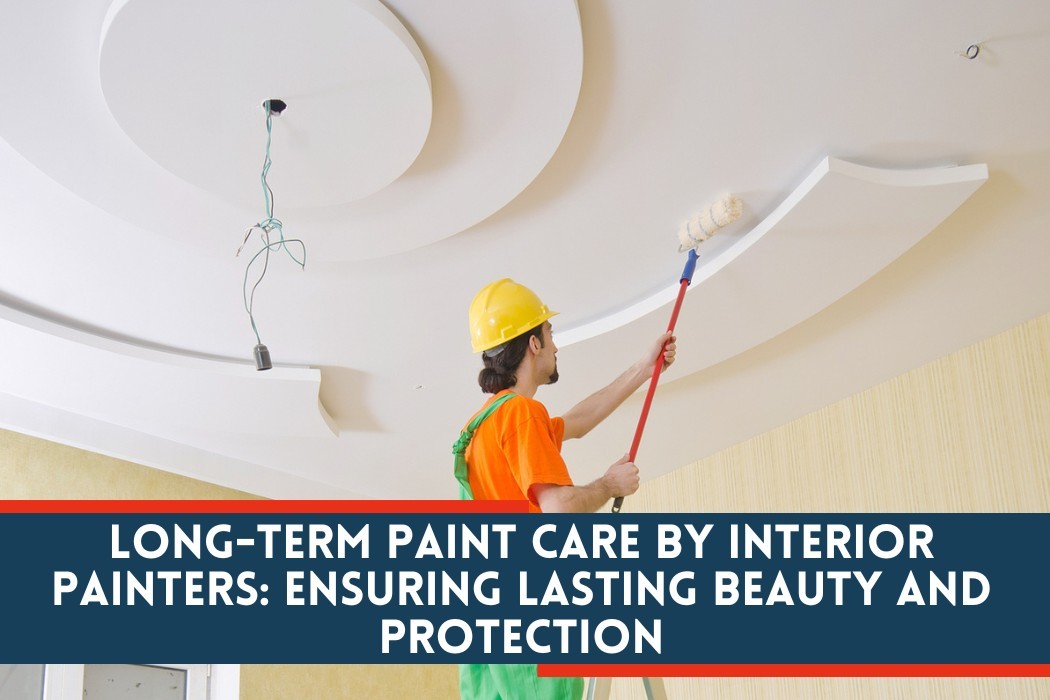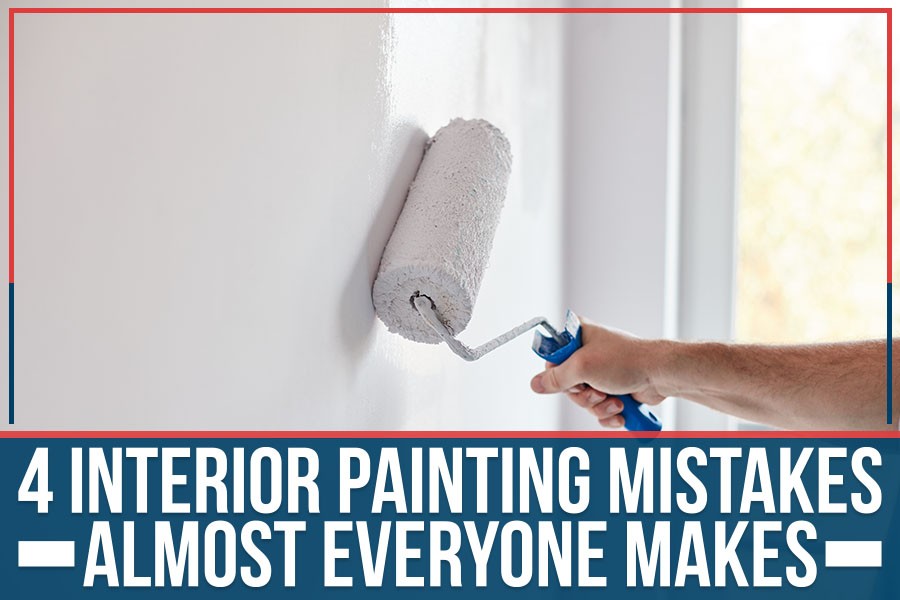4 Interior Painting Mistakes Almost Everyone Makes
Long-term Paint Care by Interior Painters: Ensuring Lasting Beauty and Protection

Table of Contents
Interior painting is an essential element of any home improvement project. It can not only enhance the aesthetic appeal of a room but also provide protection against wear and tear. However, it is important to ensure that long-term paint care is taken into consideration when selecting an interior painter for the job. This article will explore how to choose the right interior painter, prepare the room for painting, select the right paint and apply it correctly in order to ensure lasting beauty and protection of your painted surfaces.
Selecting an experienced and qualified interior painter is essential to achieving lasting beauty and protection in a paint job. It is important to do your research when looking for the right painter, as painting is a highly specialized trade requiring the correct technical knowledge and skill set to ensure the results are satisfactory. It is recommended that you take into account factors such as past experience of the painter, their qualifications, references from previous clients, as well as any specific requirements you may have for your project. Reviews online can be helpful in assessing which painters have had successful projects before. Additionally, it can be beneficial to enquire about what type of materials and techniques they use on each job in order to achieve long-term durability. By taking all these considerations into account, you will be able to select a professional who will deliver quality workmanship and satisfaction with your paint job.
Prior to painting, proper preparation of the room is essential for achieving desired results. This includes clearing away furniture and other items from the area that is to be painted, protecting other parts of the house from paint splatter or dust, and cleaning surfaces to ensure a smooth finish. All old wallpaper should be removed and any holes filled in or patched up before applying primer. Any cracks in walls or ceilings should also be addressed prior to painting as these can affect the integrity of the finished product. Finally, it is important to provide adequate ventilation by opening doors and windows during painting, as this will help reduce fumes from paint and thinners.
The selection of appropriate paint for a given project is essential to achieving desirable results. Interior painters must take into consideration the level of protection that will be required and the aesthetic appeal desired when selecting paint for a job. Different types of paints are available depending on the specific requirements, such as oil-based, water-based, alkyd, acrylic latex, and other specialty paints. Oil-based and alkyd paints provide excellent durability; however they can also be more difficult to clean and may require more time to dry between coats. Water-based paints offer easier cleanup than oil-based but may not hold up as well over time in areas where moisture is present or heavy use occurs. Acrylic latex paint offers good adhesion and flexibility while providing superior resistance to mildew growth compared to other types of paint. Specialty coatings may provide additional benefits such as fire retardancy or higher levels of gloss for certain applications.
Properly applying paint is essential to achieving a high-quality, long-lasting finish. Painting professionals have extensive knowledge of techniques and application processes that can help ensure the durability of the finished product. When preparing for painting, surfaces must be thoroughly cleaned and primed in order to prevent any imperfections from appearing later on. Proper preparation also helps create an even surface for more uniform coverage. Once prepped, painters must decide which type of brush or roller is best suited for each project. Brushes are often used in tighter areas such as corners or around trim, while rollers are used to cover large walls quickly and evenly. Additionally, painters should take into account the thickness of the paint being used before beginning; some paints require multiple coats in order to achieve desirable results. Furthermore, interior painters will need to consider which direction they apply their strokes when painting - horizontal vs vertical - in order to ensure that sagging does not occur due to gravity's effects over time. All these factors combined contribute significantly towards creating a beautiful and durable painted surface that will last for years with proper care and maintenance.
Regular cleaning and maintenance, as well as touch-ups and repairs, are essential for maintaining the beauty and durability of interior paint. These tasks should be considered part of a long-term paint care strategy in order to ensure that the original look of the painted surfaces is preserved over time. Failure to regularly clean, maintain, repair or touch up painted surfaces may lead to fading or discoloration, which can detract from the overall appearance of a home's interior.
Adhering to a regular cleaning and maintenance schedule can help ensure lasting beauty and protection of interior paintwork. Regularly dusting, vacuuming, and wiping down surfaces will help remove dust, dirt, grime, fingerprints, and other surface contaminants that could damage the paintwork over time. Additionally, it is important to use only pH-neutral cleaners when cleaning painted surfaces as strong acidic or alkaline based cleaners can cause discoloration and deterioration of the paint finish. Furthermore, deep cleaning should be done periodically by an interior painter in order to remove any layers of dirt which have built up on top of the original coat of paint. This process may involve sanding off any old layers of paint before applying a fresh coat with a high quality sealant to protect against further degradation. By following these guidelines for regular cleaning and maintenance methods for interior paints, homeowners can ensure their beautiful walls remain safe from fading or cracking for many years to come.
Occasionally, touch-ups and repairs may be necessary to keep interior paintwork looking pristine. Over time, walls and other painted surfaces can become damaged from regular use or a variety of environmental factors. This damage can range from small imperfections such as chips, scratches or scuffs to larger issues like moisture damage or even mildew. Interior painters must be able to identify the source of the damage in order to suggest the best solution.
In some cases, simple touch-up painting is enough to restore a surface back to its original condition. For larger repairs, more extensive work may need to be done by an interior painter depending on the severity of the issue. In either case, it is important for these repairs and touch-ups to be done properly so that they blend in with existing paintwork and provide lasting protection. By performing occasional touch-ups and repairs when needed, interior painters can help ensure that their clients' interiors remain beautiful for years into the future.
Painting a room is an important decision for any homeowner. It is essential to select the right interior painter and prepare the space before beginning any painting project. Additionally, selecting an appropriate paint is critical in achieving lasting beauty and protection. Once the correct painter, surface preparation, and paint choice have been made, it is important to apply the paint correctly for best results. With careful attention given to each of these steps, homeowners can enjoy their newly painted room with confidence that its beauty will last for years to come. Proper long-term care of painted surfaces helps maintain their good condition and reduce wear over time. Regular dusting and cleaning as well as occasional touch-ups will help ensure that the beauty of freshly painted rooms remains vibrant over time. Through proper selection of materials and skilled application techniques, homeowners can be confident that their investment in interior painting will bring them many years of enjoyment.
Author

Mason Marquis, raised in Newport Beach, California, and Austin, Texas, amalgamated his experiences from both vibrant cities in his journey. His academic pursuit in Economics and Psychology at the University of North Texas (UNT) led to the founding of Spray Tex Painting. This venture was not just a business for Mason but a practical application of his academic learnings, particularly the integration of economic concepts and psychological understanding. Spray Tex Painting, under Mason's direction, transcends being merely a painting service; it's a platform where client visions are realized through dedication and creativity.
Related Articles

4 Interior Painting Mistakes Almost Everyone Makes

4 Tips For Upgrading The Paint At Your Food Joint

5 Unique Texture Painting Ideas to Add Depth to Your Walls

A Comprehensive Approach: Unveiling the Whole-house Paint Services